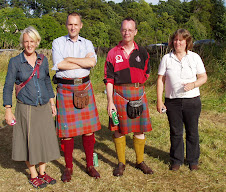Ce l’ho fatta! – at least, up to a point.
I finished row 219 of the Princess border. Row 220 is plain knitting, not a single yo or k2tog. It is followed by six more rows of garter stitch – then the insertion.
So, in a sense, I’ve finished the border. I shall spend the following rows counting and re-counting, moving the markers to points more helpful for the insertion (which has a modest 4-stitch repeat, with six stitches at each end of the row), and counting again, and identifying and marking the absolute centre stitch, on which the centre must be centred. So to speak.
And I have decided to launch myself straight into Sam the Ram, when the seven plain rows are done. It seems more sensible to have the interruption at that point, and then to return, practice the insertion, and tackle the knitting of it straight away. I don’t understand the instructions. There is nothing for it but to remember Sam-I-Am and his immortal advice: Try it and you may, I say.
Back to thoughts of swirliness (see yesterday). The relevant portion of the Little Boy sweater was knit on 210 stitches. At seven to the inch, that gives a circumference of 30” (and blocking could probably produce another) which should suffice for several of the grandchildren in the picture on my sidebar, even though it’s a bit out of date.
I took a class in designing for the very young with Kristin Nicholas at Stitches East in ’00, and I remember her remark that children don’t increase all that much in circumference as time passes, they just get taller. There’s truth in it.
And I am excited, not too strong a word, by your remark, laurieg, that it might be possible to do the sleeves on half the number of stitches and get the same effect.
The famous article about the ikat process -- to be found here – has you “recreate the skein”, mark the points where one round ends and the next begins, and then cast on two rounds’-worth. Having got this far in thought, it might be interesting at least to try it and see how close that process brings me to 210 stitches.
Non-knit
Thank you, commenters, for the help with photography. I don’t have a Mac, Ann – I begin to see, from your note, why people are so enthusiastic about them. I think it will have to be Photoshop Elements, as you suggest, Pat. I had toyed with the idea before, and Alexander poured scorn on it. He is a serious photographer, and uses the big grownup Photoshop.
Subscribe to:
Post Comments (Atom)




I was gifted Photoshop with my digi camera and it still languishes unused! I keep meaning to get lessons in it because it seems a little inaccessible unless you've a passing interest/ knowledge of photography and/or graphic arts. Good luck with it if you decide to brave it : )
ReplyDeleteI've never actually worked it out but....I've just looked at my test-sock, a 60 stitch tube which is my reference for all the dye sequencing styles I use. There are indeed about 100-110 stitches worth of dye sequencing in this particular yarn style before it repeats, so the 100 stitch repeat idea is probably fairly close.
ReplyDeleteIt is so handsome, and I'm waiting with bated breath to see the completed shawl.
I was at our local sheep and wool festival on Saturday and Rita, the designer of Sam the Ram had a booth. I chatted with her a bit and told her of Sam's appearance in Scotland. She was very pleased to hear it.
ReplyDeleteThere's no way you need the big grownup version of Photoshop. I have and work with both it and Elements and for what you want to do Elements is more than you need. It seems pretty easy for me to use but then I've been using Photoshop for 15 years or so. I can't imagine life without it but I could probably get by with Elements.
ReplyDeleteAh, counting and counting and recounting--a true hallmark of lace knitting. :)
ReplyDeleteI am green with envy at your having lots of family to wear your creations. My entire family, including grandsons, are addicted to FLEECE.
ReplyDeleteI did have some success recently, knitting for a university student, for whom handknits are fashionable.